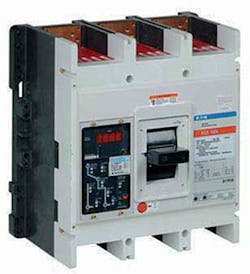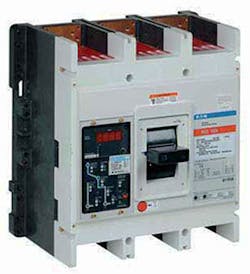The National Electrical Code (NEC) tells us that all switchgear, motor control centers, industrial control panels, etc. that are likely to require examination, adjustments, servicing or maintenance while energized must be marked in the field or factory with the appropriate information to warn qualified persons of potential electric arc flash hazards [Sec. 110.16(A)]. The hazard being referred to is the incident energy.
NFPA 70E defines incident energy as “The amount of thermal energy impressed on a surface, a certain distance from the source, generated during an electrical arc event. Incident energy is typically expressed in calories per square centimeter (cal/cm2).”
Incident energy can be extremely high, especially in 480/277V solidly grounded systems. In Sec. 240.87(B) of the 2017 NEC, there are currently seven different methods mentioned to reduce the clearing time of the overcurrent protective device, which, in turn, reduces arc energy levels. ZSI is No. 1 on the list. So what exactly is “zone-selective interlocking”?
On a coordinated electrical system, the overcurrent protective device (i.e., circuit breaker) immediately upstream from the fault opens while all of the other circuit breakers stay closed. This sounds like a good idea and has been done for years; however, without zone-selective interlocking (ZSI), this may contribute to longer fault clearing times and greater fault stress. Coordination of the overcurrent devices by itself doesn’t reduce the fault stress on a system. In some cases, it may actually add to the problem.
NFPA 70E-2015, Standard for Electrical Safety in the Workplace, (Annex O.2.3) describes ZSI as “A method that allows two or more circuit breakers to communicate with each other so that a short circuit or ground fault will be cleared by the breaker closest to the fault with no intentional delay. Clearing the fault in the shortest time aids in reducing the incident energy.” Utilizing ZSI on a coordinated system is one of the best ways to quickly clear a fault while also reducing stress on equipment during a fault condition.
Incorporating ZSI also allow breakers close to the short circuit or ground fault to communicate with the breakers upstream and reduce the clearing time of the breaker closest to the fault, thus reducing the incident energy. In order to maximize the protection of the system, as many different levels or zones as possible in the distribution system need to be interlocked.
In the petrochemical industry we’ve yet to see widespread use of ZSI schemes.
© 2016 Fluor Corporation. All Rights Reserved.
About the Author
Eddie Guidry
Senior Fellow
Eddie Guidry is a senior fellow with Fluor Enterprises, Inc., Sugar Land, Texas. He is highly skilled in electrical and control systems for industrial construction, design, and engineering (both domestic and abroad). The majority of Eddie’s 38 years of experience includes upstream and downstream portions of petrochemical plants and refineries. He is also heavily experienced in water and wastewater treatment facilities. Eddie is very active in the development of U.S. national (ANSI) and international codes and standards, and has been a principal member of the National Fire Protection Association (NFPA) National Electrical Code (NEC) committee since 1999 and NFPA’s National Advisory Committee on Electrical Safety Research since 2008. Eddie, who has also developed and conducted many electrical courses and seminars over the years, currently holds the corporate Master Electrician license for Fluor Corporation in the State of Texas and is also an ICC/IAEI certified electrical inspector.

